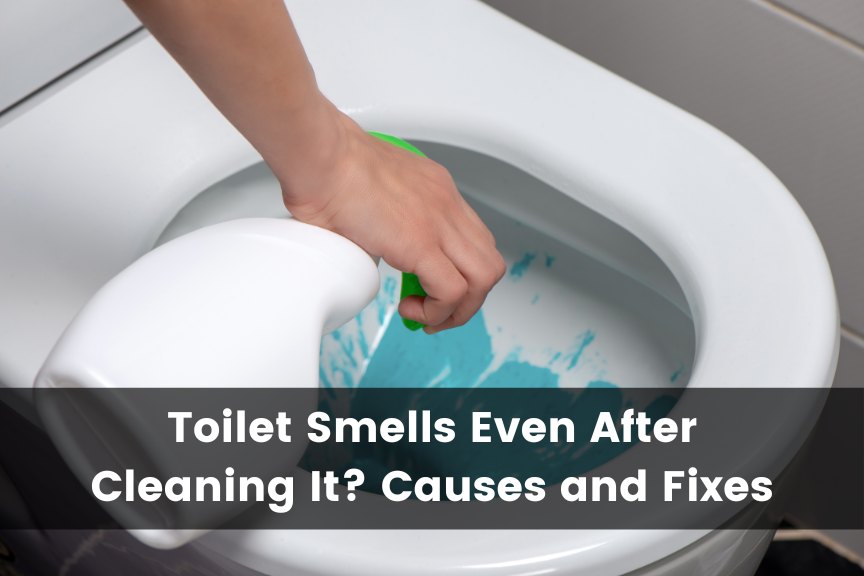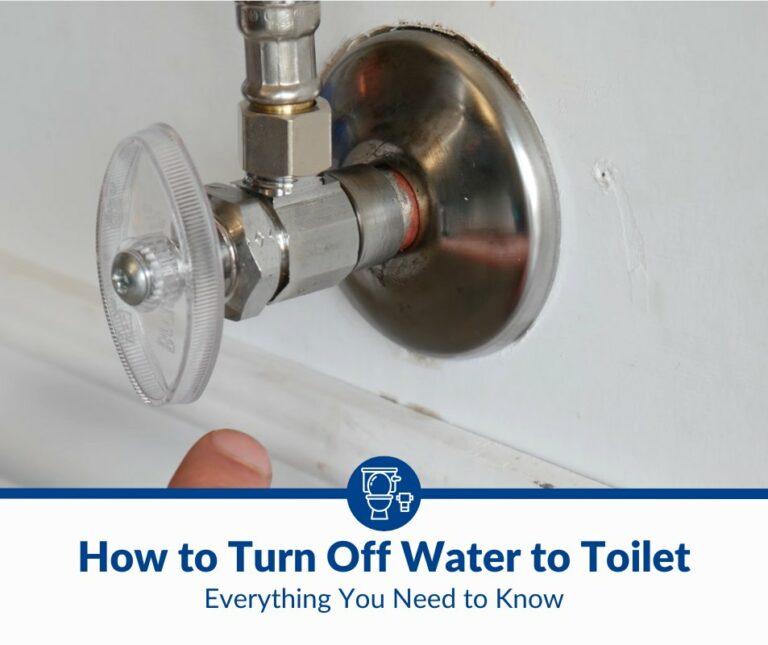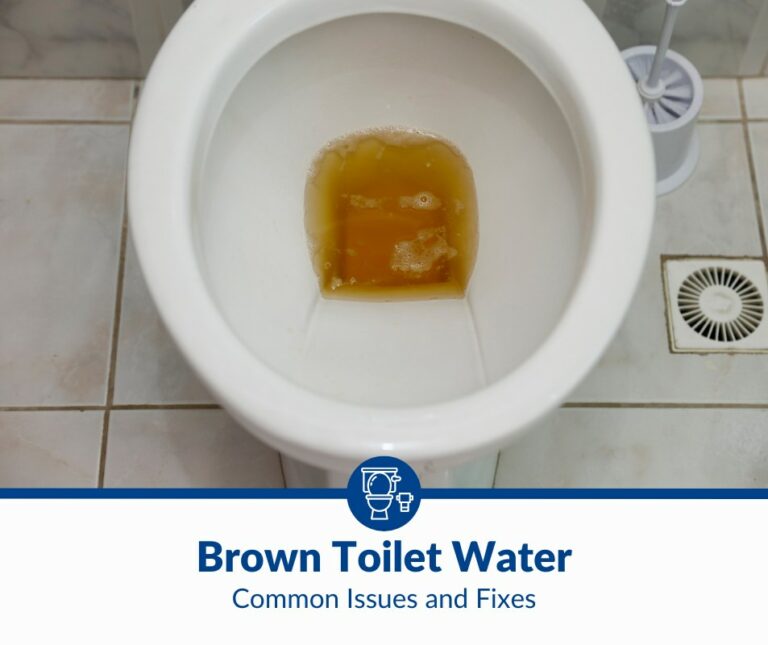Toilet Smells Even After Cleaning It? Causes and Fixes
A dirty toilet can stink up your entire home and drastically decrease your household’s indoor air quality. But what should you do when your toilet smells even after cleaning it?
When a toilet smells bad even after cleaning, it could be due to bacteria-rich tap water, gentle cleaning chemicals, or an unsecured toilet. Other causes include a clogged plumbing system, lack of water, or incomplete cleaning. The best solution varies depending on the precise cause of the odor.
To ensure you say goodbye to unpleasant toilet odors, let’s address the most common causes of post-cleaning toilet smells and discuss the best ways to manage them.
1. Your Tap Water Contains Bacteria That Emit an Odor
Poor-quality tap water isn’t only dangerous to drink or bathe in; it can contribute to significant plumbing problems, including foul smells emanating from your toilet.
Bacteria is one of the most common waterborne contaminants contributing to foul-smelling water.
Some types, like sulfur-oxidizing bacteria (which often produces a smell similar to rotten eggs), aren’t considered a health danger. But others can be a sign of groundwater pollution. Therefore, it’s crucial to be aware of your tap water quality.
Throughout most of the world, government sanitation departments test tap water quality. For example, in the United States, water quality reports are typically submitted once a year (included as part of your water bill).
If you need more clarification about your local tap water quality, inquire with your local water utility company or government department. You can also choose to perform your test independently.
Investing in a do-it-yourself bacteria test like the Safe Home DIY Drinking Water Test Kit (available on Amazon.com) is an excellent way to measure the bacteria levels in your tap water. You only need to fill one of the included test vials with tap water, seal it shut, and then give it a shake.
Within about 24 hours, the water will either turn a yellow-orange color (indicating little or no bacteria) or green (indicating the presence of bacteria). If your home’s water comes from a community source and the vial turns green, you’ll want to contact your water supply company or utility source to inform them of this problem.
Regardless of your water source (city or well), if bacteria is present in your home’s tap water, you’ll want to consider investing in a water filtration system.
How To Fix
Bacteria-rich tap water isn’t only a source of unpleasant bathroom odors and a hazard to your and your household’s health.
If you’ve discovered that your home’s tap water contains bacteria, you should consider installing a whole-house water filter. This type of water filter can remove contaminants from the tap water entering your home, resulting in cleaner, safer water that doesn’t contribute to stinky toilets.
A housewide water filtration system generally costs between $1,000 and $3,000, depending on the size of your home and the type of system you choose.
If you’re unsure whether a whole-house water filtrating system is right for you, check out this helpful video for more information:
2. Your Cleaning Chemicals Are Too Weak
The push to use “green cleaner” instead of caustic chemicals like bleach has several notable benefits, including reducing household chemicals risks. However, when it comes to keeping your toilet clean and smell-free, non-toxic cleaners can prove inefficient.
Suppose you’ve used gentle, non-toxic cleaners like vinegar, baking soda, or lemon juice. In that case, you might struggle to remove odor-causing filth inside your toilet, resulting in foul smells that persist long after cleaning.
Overall, gentle cleaning agents can be great for everyday bathroom-cleaning tasks like wiping down counters or sanitizing the toilet seat. But you should consider using a more potent cleaning agent for weekly or monthly toilet cleanings.
How To Fix
The answer to this issue is simple; supplement your non-toxic cleaning supplies with bleach or cleaning products that contain bleach.
Bleach is a biocide that kills biological organisms upon contact, including odor-causing bacteria. As such, it’s a must-have addition to any toilet-cleaning supply list.
So long as you use bleach safely (reading and following the instruction label), you can rest easy knowing that you’re not damaging the environment or exposing yourself to potential health risks.
3. Gaps Between Your Toilet and Floor Generate Odors
Does your toilet lightly rock when you sit down on it? If so, there’s a good chance it’s not firmly secured and sealed to the floor.
When gaps form between your bathroom floor and the toilet, smells can quickly arise. Waste and water can collect in these gaps, generating mold and bacteria that release noxious odors.
An exposed (or partially exposed) closet flange can also lead to a foul-smelling toilet.
Closet flanges act as coupling between your toilet’s waste output trap and the sewage pipe beneath the lavatory. It allows waste to flow into the septic tank or sewage system without spilling into the small gaps between the toilet and bathroom floor.
When the closet flange is loose or unsealed, flushed waste can spill out and collect in the gaps beneath the toilet, resulting in a long-lasting sewage smell that worsens over time.
As you might imagine, human waste collecting beneath your toilet isn’t only a stinky problem—it can quickly become a health hazard! Consequently, it’s vital to act fast if your toilet doesn’t seem entirely secure and stable or if you’ve noticed bad smells emanating from the base of the lavatory.
How To Fix
Toilets don’t just stay put because they’re heavy. Instead, they’re connected to waste pipes via a closet flange and held tightly to the floor via toilet anchor bolts.
The most straightforward way to fix an insecure toilet is to tighten the anchor bolts on either side of the toilet base. An adjustable wrench is the best tool for this job.
Of course, tightening the bolts won’t eliminate unpleasant odors resulting from built-up waste and mold beneath your toilet. It also won’t fix a broken closet flange.
In both cases, you’ll need to remove your toilet temporarily. Doing so will allow you to access the trouble areas, clean away any odor-causing grime, and replace the flange (if necessary).
However, removing a toilet and replacing a closet flange are challenging do-it-yourself jobs. So, if you suspect that a wobbly toilet or broken toilet flange is to blame for your bathroom’s unpleasant odors, the best thing to do is contact a reputable plumber for assistance.
4. There’s a Clog in the Toilet System Emitting Foul Smells
If you’ve washed away some leftovers down the sink but forgotten to activate the garbage disposal, you’re likely familiar with how smelly blockages in a drain can become.
Toilet drain blockages can be just as (if not more) stinky, leaving your spick-and-span toilet smelling like an open sewer.
Several things can lead to a clog in the line, including the following:
- Insufficient water in the bowl
- Excessive toilet paper
- Flushed sanitary pads or tampons
- Children’s toys
In most cases, you’ll immediately know when your toilet’s u-bend is struggling, as you won’t be able to flush your toilet. But sometimes, identifying clogs in your toilet’s plumbing system can take time and effort.
One of the most common signs of a clog in the system is a toilet that overflows when flushed. However, slow-draining water and a toilet bowl that gurgles loudly when you flush the toilet can also be signs of a clog.
On the bright side, fixing this issue could be as simple as using a plunger. But on the other hand, some clogs (especially those related to flushed items) require professional assistance.
How To Fix
Plunging is the first thing you must try when dealing with a clogged toilet. If you’ve never used a plunger in a toilet before, the basic steps are:
- Insert the wide rubber end of the plunger into the toilet bowl, covering the drain.
- Press the plunger down onto the train to form a slight seal.
- Pull and push the plunger’s handle without raising the rubber portion.
- Repeat step three for thirty seconds.
- Slowly lift the plunger from the drain.
This process pressurizes the toilet drain, forcing clogs down through the closet flange and into the waste pipe beneath the toilet. If the plunger pushes the clog away, the water in the bowl should immediately drain after you lift the plunger.
If plunging doesn’t remove the clog, you can also try using a pipe-safe drain cleaner.
Drano Max Gel (available on Amazon.com) is one of the top-rated chemical drain cleaners and is safe for plastic and metal pipes. It’s also safe to use on toilets connected to septic tanks. This thick liquid cleaner can eat through organic matter like waste and hair, but it can’t handle physical objects.
If a large object has made its way down your toilet drain (a common occurrence in households with small children), it’s best to contact a plumber immediately.
5. There’s Not Enough Water in the Bowl To Prevent Odors
Low-flow toilets are an excellent way to reduce your household’s water consumption, saving you money on water bills and helping keep your local water supply in check. However, these toilets can suffer from occasional stinkiness, especially when the lid is left open.
The same applies to toilets with tank-filling problems or those left unused and open for long periods.
That’s because the water in your toilet bowl forms a seal, preventing foul smells from the waste pipe from rising out of the trap (u-bend) and into your home. So, when the water level in the toilet bowl drops significantly, your toilet can begin to stink, even if it’s clean.
How To Fix
If you have a standard toilet (not a low-flow model), and you’ve noticed that the bowl’s water level barely covers the drain, you’ll first want to check the tank.
Sometimes, the flush valve can break, causing it to remain shut when you flush. When this happens, your toilet will drain, but it won’t refill.
Checking the handle arm chain is also a great idea. This chain can rust or fall off the hammer arm, preventing it from lifting the flush valve and refilling the toilet bowl.
But if your tank’s components are functioning correctly and there’s still minimal water flowing into the toilet bowl after each flush, the issue might be the water supply line. Contacting your local plumber can help you solve this problem.
6. You Haven’t Cleaned All Parts of the Toilet
Cleaning your toilet doesn’t only mean scrubbing the inside of the bowl and wiping down the top of the seat. So, if these are the only areas you’ve been focusing on, your toilet might continue to emit unpleasant odors.
Unfortunately, waste can collect beneath the toilet seat, leading to foul smells. Mold growth can also become a stinky problem, especially in your toilet tank.
If you’ve eliminated all other potential causes of post-cleaning toilet odor, the solution could be as simple as performing a more thorough cleaning.
How To Fix
Properly cleaning your toilet can be time-consuming, mainly if you typically only scrub the inside of the bowl.
But if you clean your toilet thoroughly, you’ll likely notice a significant reduction in unpleasant smells. Besides, comprehensive cleanings lead to less work over time!
For a complete cleaning, you’ll need the following:
- Bleach
- White distilled vinegar
- A toilet brush
- A bathroom scrub brush
- Disinfecting wipes
It’s also helpful to have a pair of thick cleaning gloves (latex or rubber) and a roll of paper towels on hand.
Now, let’s explore the basic steps of cleaning your toilet:
- Pour vinegar into the toilet tank
- Scrub the tank and tank lid
- Pour bleach into the toilet bowl
- Wipe the toilet seat, lid, and sides
- Scrub the inside of the bowl
Let’s explore these steps to ensure your toilet is as clean as possible:
Pour Vinegar Into the Toilet Tank
After gathering your supplies, start cleaning the toilet tank by the following steps:
- Pour white distilled vinegar into the tank, stopping about one inch (approximately 2.5 centimeters) from the top.
- Allow the vinegar to sit overnight (up to 12 hours).
- Then, shut off your toilet’s water valve, preventing the tank from refilling.
Scrub the Tank and Tank Lid and Disinfect With Bleach
Once you have completed the above steps, it’s time to start scrubbing. The most effective way to do this is by following these steps:
- Flush the toilet to remove the vinegar-water solution, and continue flushing until the tank empties.
- Take a clean toilet brush and gently scrub the inside, focusing on any moldy areas along the sides and bottom. Avoid force on the flush valve or handle arm chain, as excessive force can damage these components.
- When the interior of the tank is grime-free, use a disinfecting wipe (or bleach-based disposable wipe) to clean the inside of the toilet tank lid. Mold tends to build up on the interior edges of the toilet lid. You may need to use your bathroom scrub brush to clean these edges.
- Before moving on to the next step, turn the toilet water valve back to the open position.
- Pour about ½ cup (125 ml) of bleach into the toilet bowl.
- Set a ten-minute timer, after which you’ll start scrubbing the inside of the bowl with your toilet brush.
Wipe the Toilet Seat, Lid, and Sides
Use the disinfecting wipe to clean the front and bottom of the toilet seat. Use a new wipe for each area to reduce the spread of germs and filth. Also, wipe down the toilet seat lid (bottom and top) and the area behind the seat (below the tank).
If the timer has yet to go off, take this moment to wipe the sides of your toilet’s tank and seat. Immediately drying these recently cleaned areas with fresh paper towels is an excellent way to reduce streaks and create a nice shine.
Scrub the Inside of the Bowl
After ten minutes, use a clean toilet scrub brush to remove mold or filth from your toilet bowl. Then do the following:
- Work the bleach-water mixture onto the brush end for maximum cleaning efficiency.
- After scrubbing for several minutes, flush the toilet, allowing the tank’s fresh water to run over the scrub brush to help remove any residue.
- Place the scrub brush back into its holder.
If you still need to wipe all parts of your toilet with disinfecting wipes, finish this step now.
Voilà! You’ve now performed a deep clean of your toilet, helping to reduce or eliminate foul smells.
Summary
If you’ve cleaned your toilet, but it continues to produce foul odors, several culprits could be to blame. For example, you have bacteria-laden tap water or an internal plumbing clog.
It’s also crucial to consider the cleaning products you use. Gentle cleaners might be less toxic than bleach, but they can also fail to remove residue and filth to the same extent as more caustic cleaning chemicals.
Hopefully, this guide has helped you determine the cause of your toilet’s unpleasant smells, ensuring that foul bathroom odors are a thing of the past.







